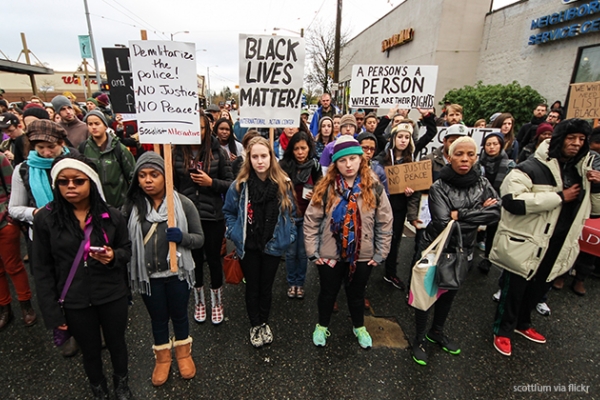The 2000s brought significant changes to the demographic and economic fabric of the United States. The country has grown increasingly diverse in recent years, driven by a combination of immigration, declining births and increasing deaths among whites, and a boom in minority births.
The economic makeup of the country has changed as well. After a decade marked by two recessions that limped into slow and uneven economic recoveries, the number of people living below the federal poverty line ($23,492 for a family of four in 2012) rose to record levels. By 2012, 46.5 million people—15 percent of the population— lived in poverty, and more than one-third of the country (107.5 million) lived below twice the poverty line (DeNavas-Walt, Proctor, and Smith 2013).[1]
These changes did not spread evenly across the country. They have played out differently across a diverse array of places, clustering and unfolding in ways that have influenced the growth (or decline) of communities over time. For decades, the images tied to discussions of poverty and place primarily have been those of distressed inner cities and declining and isolated rural communities. Indeed, historically, that is where the challenges of poverty have been most pronounced.
Cities continue to grapple with persistent and stubbornly high poverty rates. But as poverty grew to record levels in the 2000s, it touched more people and places than before. At the same time, perceptions of where poverty is and whom it affects often have not kept pace with its growing reach. The poor population in suburbs grew by 65 percent between 2000 and 2012, more than twice the pace of growth in big cities and rural communities. By 2012, the suburbs were home to three million more poor residents than big cities. What is more, as suburban poverty grew rapidly in the 2000s, it also moved beyond older, inner-ring suburbs that have long struggled with poverty alongside central cities to newer, exurban communities that may have previously seemed immune to these trends (Kneebone and Berube 2013).
The suburbanization of poverty reflects shifting housing and labor market dynamics. In regions where inner-city redevelopment and population are on the rise, housing price pressures have prompted some residents to look further out in the region for more affordable housing options. Housing subsidies have become more suburban as well. By 2008, roughly half of residents in voucher households lived in the suburbs, although often in less opportunity-rich communities than their higher-income counterparts (Covington, Freeman, and Stoll 2011). In addition, the geography of low-wage work became more suburban over the last decade.
The rapid growth in poverty and its increasing concentration in suburban communities and smaller metropolitan areas have often occurred in places ill-equipped to deal with these issues. Scott Allard and Benjamin Roth’s research has documented the strained and patchy nature of the nonprofit safety net in suburbs (Allard and Roth 2010). The local governance capacity of these communities also tends to vary across the fragmented jurisdictional map that encompasses these places. Many places often also lack the municipal staff, structures, and institutional experience to address the growing need in their communities. In addition to services, resources like public transit tend to be less developed or lacking altogether outside major urban hubs.
The rapid pace at which the geography of poverty and opportunity has shifted within the United States since 2000 should serve as a call to action. The community in which one lives affects the types of education options, job opportunities, services, and supports available to them. Put simply, place matters, and places change. And rarely do they do so in isolation. Rather, regional forces from population dynamics to housing and labor market trends intersect to create an evolving map of both barriers and access to opportunity. This shifting map of poverty and its reconcentration in recent years has serious implications for policy makers and practitioners working to build shared prosperity and access to opportunity across places. Failing to act runs the risk of leaving the most disadvantaged populations and places behind.
Elizabeth Kneebone is a Penn IUR Scholar and a fellow of the Brookings Institution’s Metropolitan Policy Program. This article is adapted from “The Changing Geography of Disadvantage” in Shared Prosperity in America’s Communities, available on the University of Pennsylvania Press website. Full citation: Kneebone, Elizabeth, “The Changing Geography of Disadvantage.” In Shared Prosperity in America’s Communities, Susan Wachter and Lei Ding, eds. Philadelphia: University of Pennsylvania Press, 2016.
References:
Allard, Scott W., and Benjamin Roth. 2010. “Strained Suburbs: The Social Service Challenges of Rising Suburban Poverty.” Metropolitan Opportunity Series 7. Washington, D.C.: Brookings Institution
Covington, Kenya, Lance Freeman, and Michael Stoll. 2011. “The Suburbanization of Housing Choice Voucher Recipients.” Washington, D.C.: Brookings Institution
DeNavas- Walt, Carmen, Bernadette Proctor, and Jessica Smith. 2013. “Income, Poverty, and Health Insurance Coverage in the United States: 2012.” Current Population Reports. Washington, D.C.: U.S. Census Bureau.
Kneebone, Elizabeth, and Alan Berube. 2013. Confronting Suburban Poverty in America. Washington, D.C.: Brookings Institution Press.
[1] The figures on the national poverty rate and poor population come from the U.S. Census Bureau Current Population Survey. They are based on the official federal poverty thresholds and calculated based on gross, pre-tax income.



